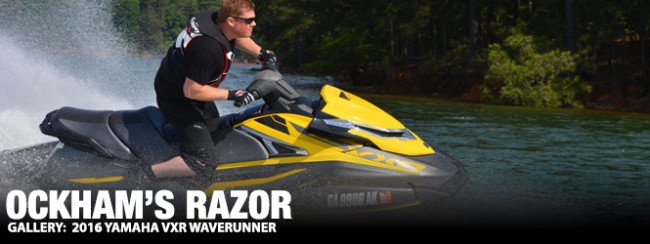
William of Ockham philosophized nearly 700 years ago that the simplest answer is usually the better of two. Sounds pretty simple, right? Yeah, that’s kind of the point. And its precisely the spirit behind Yamaha’s hugely successful big-power-in-a-little-package 2016 VXR WaveRunner. Introduced in its current form – based upon the all-new VX plaform – the VXR is a machine that has but one purpose, to maximize fun and minimize fat. There is very little found on the VXR that is extra fat, fluff or frills. No flowery chrome, fanciful features that will go hardly used, or even some that might be sorta nice (we’d love to see the FZR’s telescoping steering on future VXRs – Ed.). Rather, the VXR is light, lean and raring to go.
The more time we spend with the VXR, the more we come to like it, and not necessarily for the reasons that Yamaha would normally market this craft. Because the VXR (and its slightly altered sibling, the VXS) are equipped with very little in the way of creature comforts – apart from the brand’s stellar dual throttle brake and reverse system RiDE – but wields Yamaha’s 1812cc 4-cylinder dual-overhead-cam High Output (HO) Yamaha Marine Engine (backed by its 155mm pump), the VXR offers one of the best power-to-weight ratios available through the company. This is achieved by a smart use of Yamaha’s proprietary NanoXcel material for its hull and deck, shaving the runabout’s heft down to 767 pounds (dry).
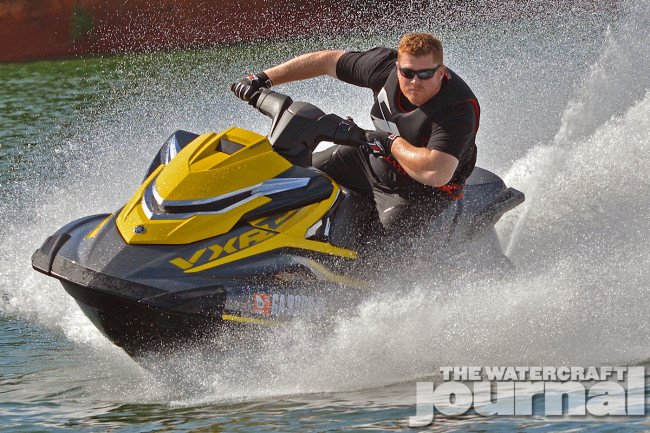
As outlined during the introduction of the newly redesigned VX platform, the dimensions of the entry-level craft were expanded to improve both riding characteristics and wider versatility in overall performance. The VX hull was lengthened from 126.8-inches to 131.5-inches and widened from 46.1-inches to 48-inches. Increasing its size also improved stability and ride comfort, but more importantly, the larger hull received modified hull strakes, softened bow chines and an entirely new keel shape. And while a lesser-equipped VX, such as the VX Deluxe might not illustrate it aptly, the 1.8-liter’s grunt and digitally-controlled bow trim allow the VXR to demonstrate the true potential embedded in the new hull design.
Simply toggle the trim down, scoot up high over the handlebars and grab all the throttle you dare. The VXR leaps to attention, snapping to plane with very little rise. While best top speeds are achieved with the trim set to neutral (64-65mph sustained), the VXR shines in the corners with the trim set low, with your inside knee dropped low in the tray and half of your butt off of the saddle. Like this, you’ll carve up the lake like any seasoned professional racer. In fact, the VXR is impressively responsive to the rider’s shift in weight, be it from side to side or front to back, all the while not feeling tipsy or imbalanced; another testament to the design of the VX hull.

Again, you won’t find a “No Wake Mode” or Cruise Assist on the VXR, but Yamaha doesn’t leave you out in the wind. As with all VX models, the VXR comes with 24.6 gallons of storage spread out between the bow, glove box and beneath the rear passenger seat in a screw-top watertight storage bin. Speaking of seats, the VXR features a high bolstered, deep scalloped, grippy saddle, with the rear passengers raised slightly higher above the driver for better visibility. Yamaha doesn’t skimp on fuel capacity either, giving the smaller performance craft its larger 18.5 gallon fuel cell (and because it’s Yamaha’s HO 1.8L, you can run either cheapo 87 or 90-plus octane fuels).
And although our test unit came in Carbon Metallic with Laser Yellow, the VXR is also available in Pure White with red highlights. We were impressed with Yamaha’s commitment to using automotive-grade paints, as a layer of pearl sparkled through the yellow when touched by the sun. Other quality touches include two-tone black-and-gray Hydro-Turf mats, and a wide, padded folding swim step. The LCD dashboard is just like the rest of the ski, simple and to the point, reading off speed, RPM, fuel (with a low fuel warning), low oil pressure warning, hour meter and check engine light with a self-diagnostic function. There are no buttons or toggles to mess with.
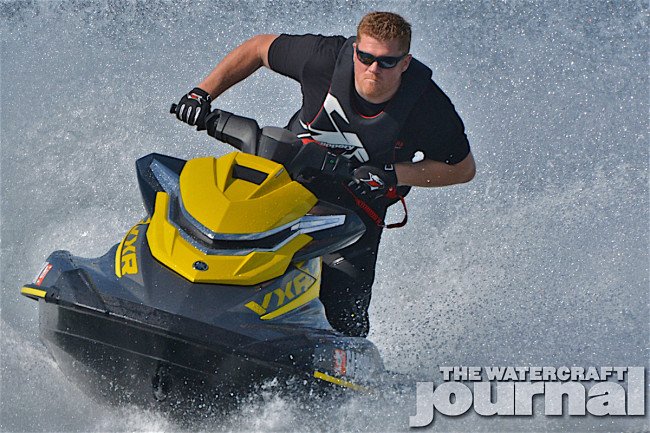
And mentioned previously, we’d love to see either the addition of the FZR’s telescoping steering, or traditional tilt steering, seeing as we found the VXR’s fixed handlebars a little too upright at times. Additionally, the VXR’s saddle could be tapered in a hair at the knees to allow for better body motion when aggressively cornering back-and-forth. And lastly, some taller riders might find their calves making contact with the rear handrail while standing up. It’s an insane job to engineer a “one size fits all” machine, so nobody’s losing any points on that one.
The VXR is listed at $11,899, coming in $300 more expensive than its nearly identical VXS counterpart (differing in color, seat and lacking a reboarding step), $800 more than the VX HO Cruiser (which has the same powerplant, but the luxury Cruiser seat and Cruise Assist features with no trim control), and surprisingly a full $1,000 more than the TR-1 powered VX Limited (which comes standard with more than $2,000 worth of accessories). But don’t let any of that sway you, because on the whole, this is one stellar machine no matter how you cut it, and it’s easily one of the most fun machines you can get your hands on today.
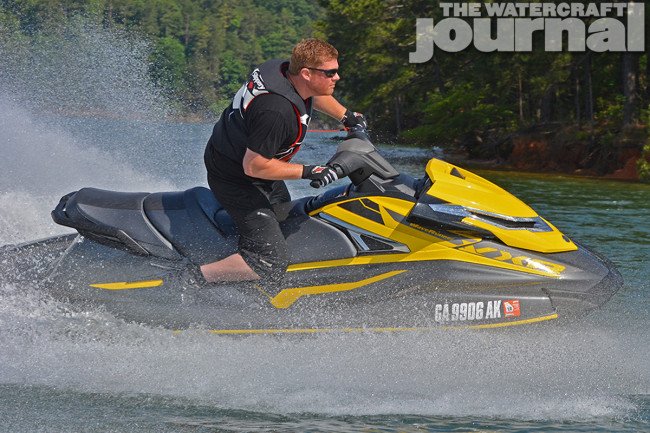
Additionally photography provided by Andrew Cullen


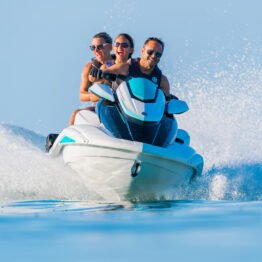





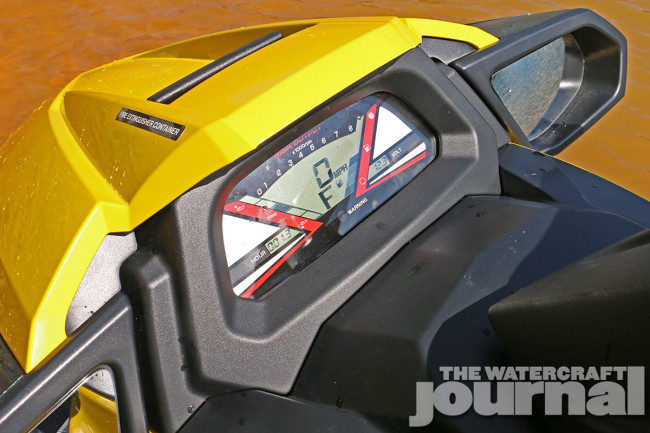

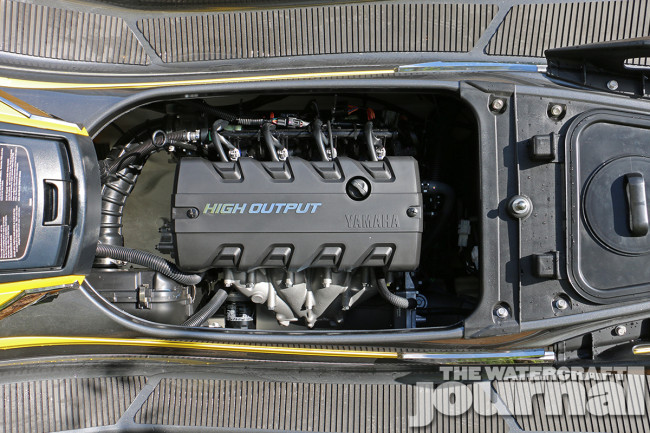
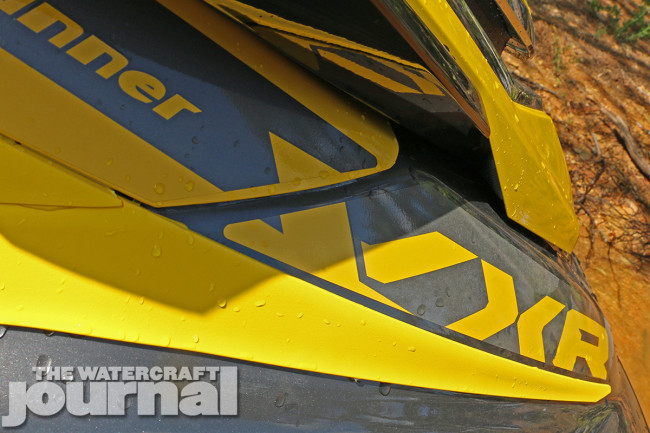
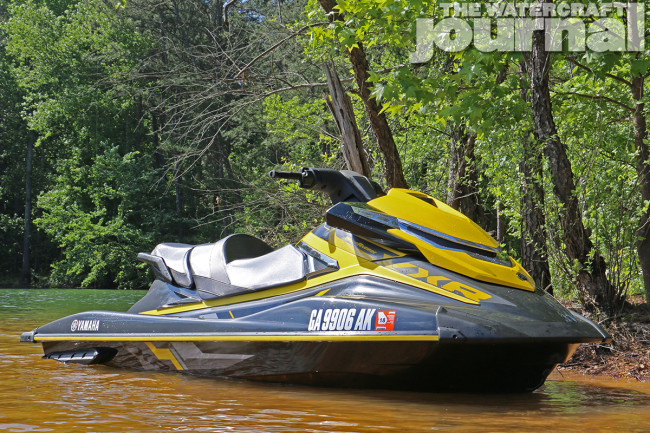




















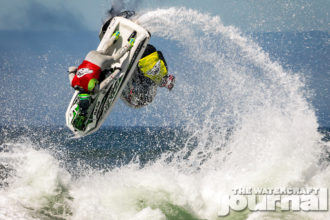


Does the vxr do well in rough water? I have a sea doo gti se 155 and wanted to know which rode better.
Performs as well as any ski I have ridden in rough water. Plenty of power for any condition and no need to worry about servicing a supercharger!